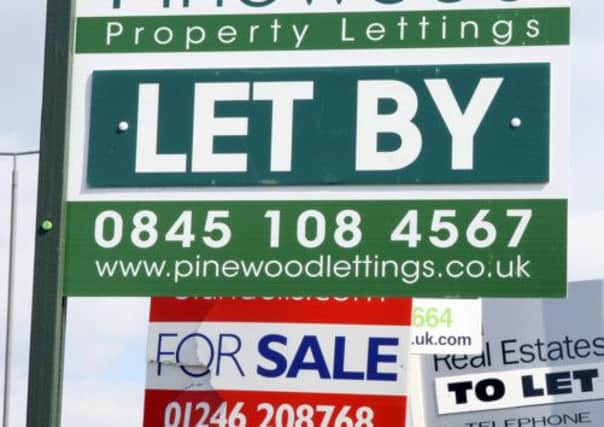Make sure a property investment will add up for you


If you are a seasoned landlord, understanding income yields and analysing return on investment may well be second nature. However, if you are relatively new to the buy-to-let game or considering your first residential property investment, you may not yet fully appreciate how important these numbers can be to the overall success of your bricks and mortar investment strategy.
While we have been conditioned to believe that the most important aspect of any property purchase is “location”, the reality is that it is almost always the maths which truly determines whether you are looking at a good long-term investment. Although there are some exceptions to this – more of which later.
Advertisement
Hide AdAdvertisement
Hide AdLet’s focus initially on the key terminology and what it means. When it comes to buying property as an investment, you should always start by calculating the Gross Income Yield. This is a relatively simple calculation whereby you divide the total annual rent you expect to achieve from the property by the total amount you are paying to buy the property in the first place.
Remember the true cost of buying a property includes any stamp duty, survey and legal fees as well as the cost of any works required before you can let it.
As an example:
You pay £150,000 to buy your investment property. You generate Gross Annual Rent of £9,600 per annum rent so £9,600 / £150,000 = 6.4. From this calculation, you can see that your Gross Income Yield is 6.4 per cent per annum.
At first glance, this might seem to be an excellent potential return, especially given that any future capital growth has not yet been taken into account and set against a backdrop of poorly returning cash deposits.
Advertisement
Hide AdAdvertisement
Hide AdHowever, gross income yields do not take account of the costs of running a buy-to-let investment so this is not the return that will end up in your pocket. It is important to take account of all costs, including insurance and repairs, service charges, which apply if you buy an apartment, together with management and letting fees.
Also remember that all landlords experience some rental voids – periods when the property is not let – and to be sensible you should factor in at least four weeks of the year when you may have no rental income.
Although costs will clearly vary depending on the type of property you are buying, as a general rule of thumb, you should assume that 30 per cent of your rent will disappear in overheads.
Once the relevant running costs have been factored in, you can see what you expect to be your Net Income Yield, which is far more important than the gross figure you started with.
Advertisement
Hide AdAdvertisement
Hide AdSo if gross annual rent is £9,600 and running costs are £2,880, net annual rent is £6,720 and this divided by the £150,000 purchase cost is a Net Income Yield of 4.48 per cent per annum.
The net return may still look healthy relative to other investment options, especially if you are getting just one or two per cent gross interest on your cash savings, but remember, if you are borrowing some of the cost of purchasing your buy-to-let property, you need to be sure that your net income will adequately cover your repayments.
In most cases, this will mean that you will be restricted by the amount you can borrow – but this is no bad thing. While less trustworthy sales organisations might tell would-be property investors that millions can be made with little or no funds to put down, this is nonsense and unless you have 30 to 40 per cent of the purchase price, it is likely that you are not ready to become a property investor, so keep saving until you have the funds available.
Notwithstanding that the projected net income return is the most important figure you need to calculate before you buy, gross returns can provide an important guide to the quality of the investment opportunity you are considering.
Advertisement
Hide AdAdvertisement
Hide AdAlthough there are exceptions to every rule, the higher the gross income yield, the more restricted your potential future capital growth might be.
Equally, the reverse often applies and if you have a lower gross yield, it can be because the property is better located and of better quality with more potential upside in the future capital value.
While not wishing to complicate matters, a low gross income yield can, of course, simply mean that the property is overpriced – this is commonplace and one of the main reasons why, unless you are already a savvy property investor, sound property advice can be worth its weight in bricks.
You may of course be lucky and find a property with a strong income yield in an excellent location. This is what you are really searching for and it is possible but there are always compromises. Just get the maths right.
Graham Bates is chief executive of Eddisons Residential Limited, Leeds. Eddisons City Rentals division letting agents is at www.eddisons.com/cityrentals